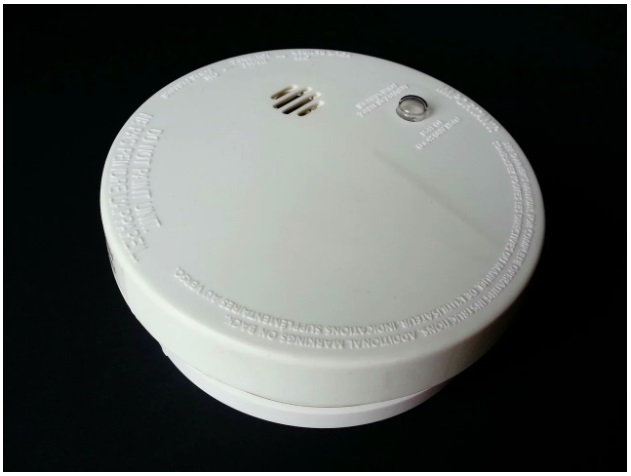How to Protect Your Home Interior from Nasty and Dangerous Fumes
Some you can control, some you cannot. Whatever the case, your indoor air quality is something you can handle. Creating a clean indoor environment where you can grow and thrive is a top priority. It's even more critical if you have kids. Fortunately, you can address these serious safety hazard concerns through simple solutions. This guide provides you with quick and easy tips to keep you and your loved ones safe.
 Picture 1 of How to Protect Your Home Interior from Nasty and Dangerous Fumes
Picture 1 of How to Protect Your Home Interior from Nasty and Dangerous Fumes
1. Carbon Monoxide Monitor
Installing a carbon monoxide monitor is ideal when preventing carbon monoxide poisoning. In addition to installing this monitor, use your appliances correctly. However, this isn't as simple as buying detectors and installing them randomly in your house. To be effective, says TopAir Systems, the monitors should be installed in strategic locations – check out their website for installation requirements. However, the general rule is to install the detectors on every floor of your home. This means you can hear the alarm from every corner of your house.
2. Use Low VOC Paint
The smell of fresh paint isn't only annoying, but it's also harmful. Paint, stain, and other finishes used in the home contain chemicals. Chemicals such as formaldehyde can release pollutants into your home's air for weeks after use. You can change this narrative by using low VOC (volatile organic compound) paint in your next home improvement project. This paint reduces the number of irritants released into your home. Additionally, avoid storing leftover paint inside your home. Even well-sealed containers can emit poisonous fumes and other chemicals.
3. Consider a Raised-Bed Garden
Pesticide chemicals can pollute the soil. Polluted soil affects the food you grow and eat. Also, contaminated soil can spread through the air as dust particles and get inside your home. If the area you reside in has contaminated soil and you want to garden, consider a raised garden. A raised garden is the best way to avoid exposing you and your household to chemicals. Typically, you build boxes from the ground up in raised gardening, and these boxes keep you protected from contaminated soil. For safety precautions, use bagged soil or soil from a non-contaminated area.
4. Air Purifier
 Picture 2 of How to Protect Your Home Interior from Nasty and Dangerous Fumes
Picture 2 of How to Protect Your Home Interior from Nasty and Dangerous Fumes
A report from the US Environmental Protection Agency (EPA) says indoor air can be five times polluted as outdoor air. This is because indoor air isn't circulated as much as outdoor air. Because of this slow circulation, airborne pollutants continue to thrive inside. These air pollutants can cause a myriad of problems, such as respiratory infections like asthma. An air purifier can refresh stalled air. It reduces the chances of health problems caused by indoor irritants; This leads to immediate and long-term health benefits for you and your family.
5. Install a Dehumidifier
A home dehumidifier can keep your indoor environment fresh all year long. The most important benefits of a dehumidifier are delivered during hot days of summer. Do you ever walk into your house and notice funny smells? This could be a sign that you have mold or mildew growing in your home. Installing a dehumidifier helps deal with issues of smell and odors. It reduces the amount of excessive moisture in your house so you can breathe easily once again. Additionally, a dehumidifier can control other issues such as dust mites.
6. Use Natural Cleaning Products
Most cleaning products available in the market give off toxic fumes. These fumes are not ideal to breathe in. Some products can also burn or irritate your skin and are poisonous if ingested. To curb such effects, consider using natural cleaning detergents. Some excellent examples include vinegar, baking soda mixed with water, olive oil, and lemon juice. Also, ensure the room you're cleaning is well-ventilated with an open window.
7. Install a Ceiling Fan
This is another top-notch method to protect your home from dangerous fumes. Fans have been around for a long time. Sure, but they're outdated, you might say. However, you need to think again. Ceiling fans provide many benefits and can make a long-lasting contribution to your home. They circulate a larger amount of air than other types of fans. This helps in effectively eliminating stalled fumes in your home by replacing them with fresh air.
Your indoor air quality is essential to your well-being. A clean indoor air environment helps protect you against respiratory conditions such as asthma and allergies. Taking steps to protect your lungs starts with the steps above. You won't have to deal with discomfort or other health problems along the way. Remember, when it comes to your health, don't sacrifice it for anything. Over to you!
You should read it
- Trojans 'confrontation' with dangerous software
- Amazon Echo: How to protect your privacy while working from home
- Protect your computer right before the return of two extremely dangerous ransomware
- 8 ways to protect your Amazon Echo privacy while working from home
- Learn about Home Assistant - Your home automation platform!
- 5 most dangerous rocket artillery systems in the world
- Bose Home Speaker 500 . review
- How to Make Your Appliances and Systems Last Longer
- How to choose the right TV for home theater
- How smart home of the super rich is equipped with a terrible security system?
- Things You Can Do to Protect Yourself from Cyberattacks
- Simple ways to protect home security cameras, avoid hacking
May be interested

Tips to clean stains, calcium deposits on bathroom glass walls

Stunning 3D Bedroom Décor Ideas That Might Interest You

Have unbelievably beautiful skin only after 2 weeks of dinner with this smoothie

The best and worst canned foods, according to nutritionists

How to wash all kinds of carpets, decorate at home without going out

How to Dispose of Dish Equipment






 15 creative interior designs make your home more attractive
15 creative interior designs make your home more attractive 12 ideal interior design ideas for narrow spaces
12 ideal interior design ideas for narrow spaces Remote computer security with Sophos Home
Remote computer security with Sophos Home The easiest 3D interior design software to learn 2021
The easiest 3D interior design software to learn 2021 Top 5 most professional interior design software in 2020
Top 5 most professional interior design software in 2020 10 creative interior designs for your home
10 creative interior designs for your home